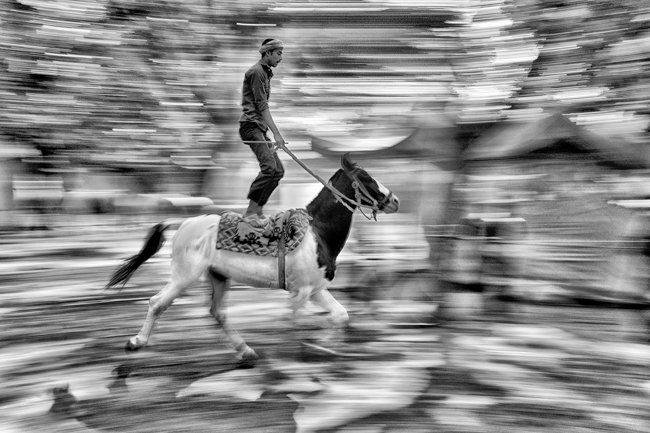A review: The stars are his bones
Colette Copeland
January 2022
A photo-haiku portfolio by Debiprasad Mukherjee
with a garland of Upanishadic texts
arranged as haiku by Gabriel Rosenstock
Originating in Japan, haiku–a deceivingly simple poetic form, does not traditionally employ literary devices like metaphor or symbolism. Rather, it evolved from sensory experiences of inward and outward reflection and observation of the natural world in order to elicit a rich, visual image for the reader. Thus, haiku provides an interesting challenge for pairing with photographs, as photography presents us simultaneously not only with a decisive moment, but also a comprehensive narrative.
In this richly evocative and poetic collaboration, Irish poet and writer Gabriel Rosenstock and Indian photographer Debriprasad Mukherjee present us with a book of stark beauty. The haikus are sourced from the ancient tomes of the Upanishads. Many have looked to the writings of these ancient sages for guidance in the modern world. It’s important to note that the haikus do not illustrate the photographs. Nor do the photographs illustrate the haikus. Rather, they are autonomous, but when presented together, offer us an opportunity to ruminate upon the interconnections between cultures, communities and nations as well as the relationship between humanity and the natural world.
the gods said to the Mind‘
sing for us!’
and the Mind
sangarsanadéitheleis an Aigne
‘can dúinn!’
is chanan Aigne
Mukherjee’s photographic practice is rooted in documentary and photojournalism. However, he uses beauty and surrealism as stylistic tactics to beguile his viewers. His work does not shy away from the harshness and violence of the world. He captures quiet and hidden moments, offering us new perspectives into every day moments in India.
Brian Ó Conchubhair described Rosenstock’s haikus as “striking like a rapier.” Perhaps Ó Conchubhair is referring to the precision of Rostenstock’s language, but the image of a rapier is a violent one. I experience Rosenstock’s haikus as a breath. In some, like p. 21, “the gods said to the Mind, ‘sing to us’, and the Mind sang,” the breath is jagged, sharp and shallow and in others, like p. 9, “he became a steed and carried the gods…a stallion,” the breath is slow, long and savored.
he became a steed
and carried the gods . . .
a stallion
deineadheach de
d’iompairsénadéithe. . .
stail
The haikus are presented in both English and Irish. The book is published by Cross-Cultural Communications in New York.
For more information you can go to →
Debiprasad Mukherjee →
Gabriel Rosenstock →
◊
Colette Copeland is a multimedia visual artist/writer whose work examines gender, death and contemporary culture. Sourcing personal narratives and popular media, she uses video, performance, bookmaking and installation to question societal roles and media’s influence on enculturation. Her experimental videos employ absurdist humor to explore the landscape of human relationships. Website → Instagram →
For more interviews & articles by Colette Copeland on Arteidolia →



